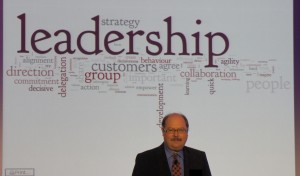The leadership investment mentioned in my previous post of Feb 12 is moving forward. This week we will be discussing and agreeing to the process to be undertaken.
The purpose of the intervention with this small company is to support the executive team to take greater accountability for the direction and development of the German organization.
The following is a six step model which I will propose to accompany the team in its development over the next six months.
Like all cultural issues, a circle is the best symbol to use in describing the process to be undertaken. No sooner are you finished with the development process than you find yourself at the beginning of the circle, ready to initiate the next phase of development. The process for this next phase looks very similar to the process which has just been gone through. Developing teams and or organizational culture is similar to life-long learning- it needs to be constantly nurtured.
Entheos’ Six Step Team Development Process contains the following items:
1) Establish Framework
This involves clearly setting the purpose of the team development process as well as defining what should be achieved. It may also require clearly setting the boundaries around who is and who is not part of the team.
2) Initiate process
This phase has its challenges and pitfalls. The objective is to get as much acceptance as possibile from the team members while at the same time taking a pulse of what is actually happening in the team. Many team members may be lukewarm or downright hostile about getting involved in another activity which adds to the burden of their busy schedules. Obtaining their understanding and acceptance that this process will be of great benefit to them is paramount. As a team consultant Entheos needs to diagnose initial team dynamics issues (i.e. existing conflicts within the team) at this stage in order to plan for the next phase of the intervention.
3) Foster team awareness
This sounds simple, but is actually quite complex. People’s understanding of team and their role within that team varies greatly. Some individuals may not even acknowledge that they are part of the team. In this phase it is key to look at people’s understanding of the team as well as the various links which glue a team together. Focus is on the functioning or non-functioning of relationships within the team as well as getting team members to deepen their sense of team. I also likes to look at team values s stage and compare those with how they co-exist with company values.
4) Create team identity
This stage requires a deep dive into team roles – who is filling them and what is lacking. After sorting out team priorities, team members then make commitments to fill in the gaps where certain roles are underrepresented. New team agreements emerge.
Throughout Stages 3 and 4 the individual team members may need individual coaching. After Stage 4, the consultant/coach needs to shift into a team coaching role – looking not necessarily at the individuals but at the interactions among individuals.
5) Reinforce new team dynamic
With the new priorities and agreeement in place, it is time and essential to test these new commitments. The team building development will only remain a theoretical exercise unless it is quickly put to the test. My preferred approach is to pick ONE challenge that the team is facing and then approach it through the prism of the new team understanding. Team members are asked to be particularly aware of interactions on this priority item. Through this strengthened consciousness, the possibilities of new team interactions become real and are strengthened.
6) Reflect on team development
After a sufficient amount of time has passed (approx. 6 months), team members are invited to reflect as a group on what has changed, what has improved (or not). As part of this exercise, team members ponder what might be the next step in their development.
Throughout the process I make an extra effort to build capacity within the organization. By approaching the team coaching in this manner, the team members develop the skills to guide the team through the next level of development. Emerging from the positive expererience of teram coaching, the team members have acquired the language, the tools and the motivation to carry the process forward.




